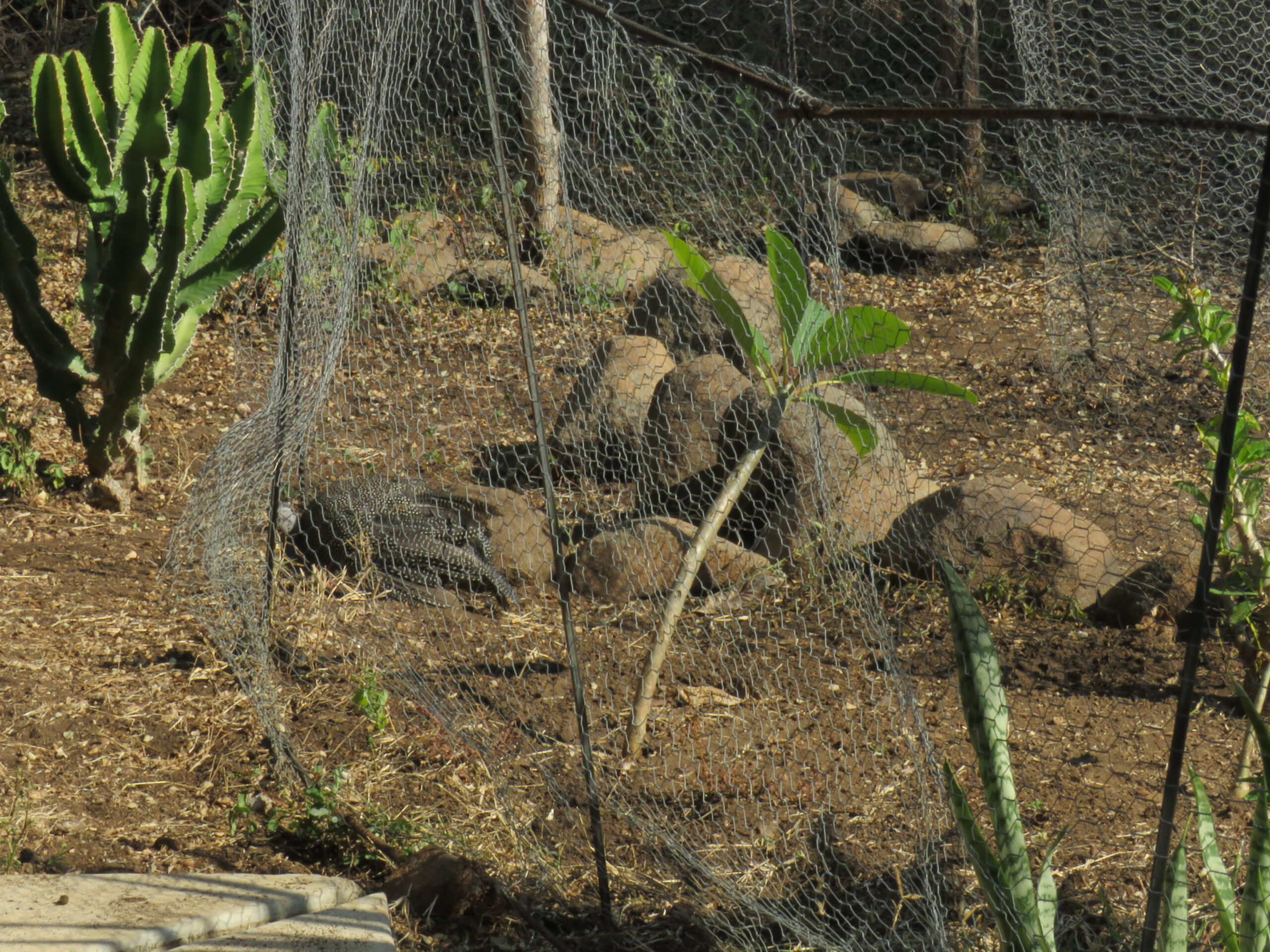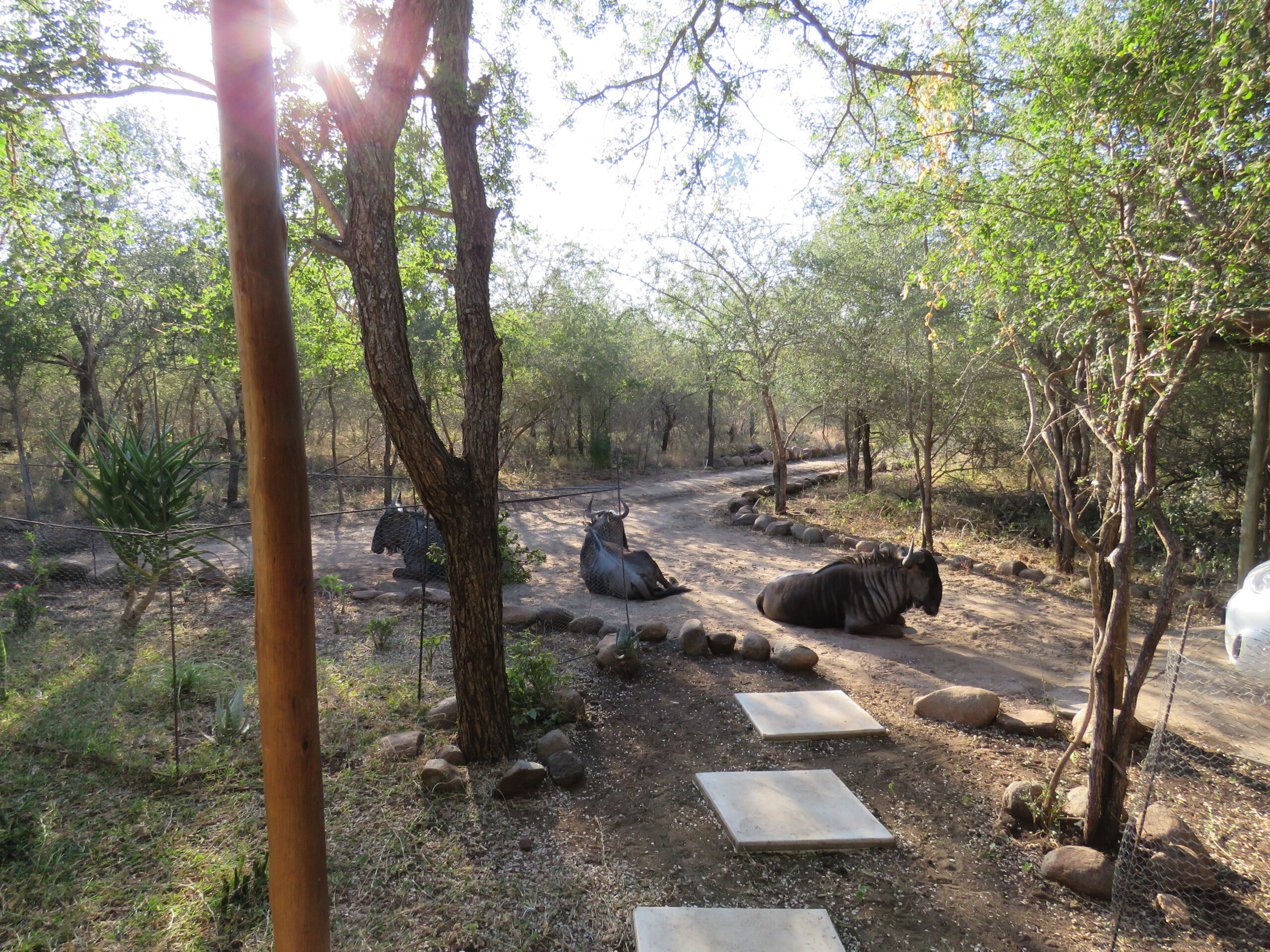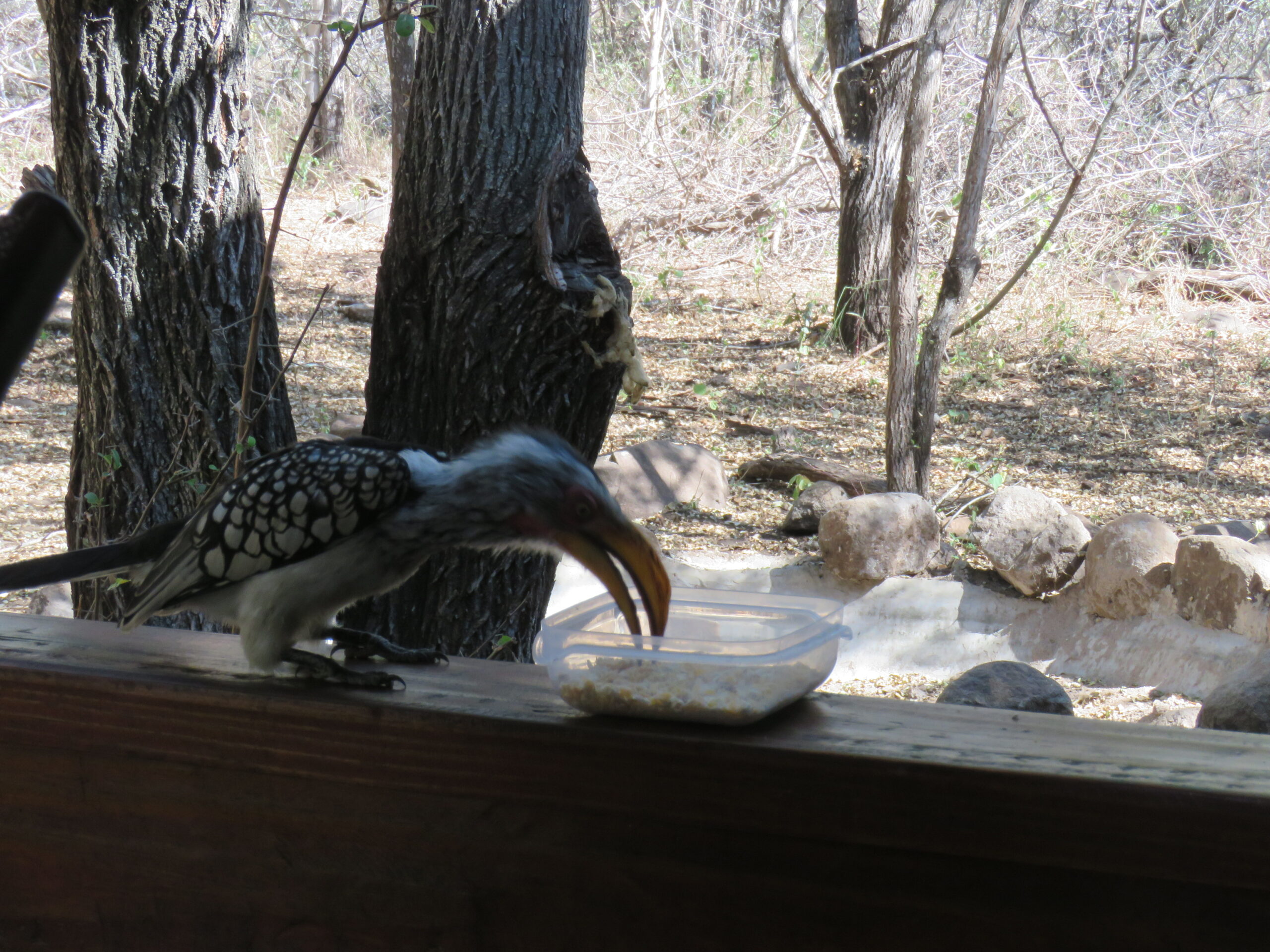
Who’s in the garden this morning?
- 1 wildebeest
- 13 warthogs
- 9 bushbucks
- 7 kudus
- 89 helmeted guinea-fowls
- Frank and The Misses
- 1 duiker

I forgot to take photos of the new camping/folding chairs that Rita and Gerhard picked up for all of us in Nelspruit. We arrived at the river where I’d intended to take the photos once the chairs were unwrapped and set up, but no more than minutes after we arrived, the wildlife photo ops were so many, I forgot.
We were all busy spotting wildlife and were distracted. Of course, we love the chairs they selected with human-sized chairs for the boys and smaller, more “girlie” chairs for Rita and me. Now, we have chairs we can take anywhere when at some social events, we’re asked to bring our own.

However, I just recalled that Rita had sent me photos in WhatApp from the store in Nelspruit so now I have added them here, as shown below. I love the little tray on my chair on which to put food and drinks. In our old lives, purchasing such chairs would not be noteworthy. But, in this life, given what little we buy, it was rather fun.


Once we were all situated, we were squealing with delight over the elephants we spotted across the river. The distance, although quite far from us, allowed me to take the photos included here today. The most incredible thrill of all was when the elephants crossed the river (which we didn’t see) and started munching on vegetation only a short distance from us.
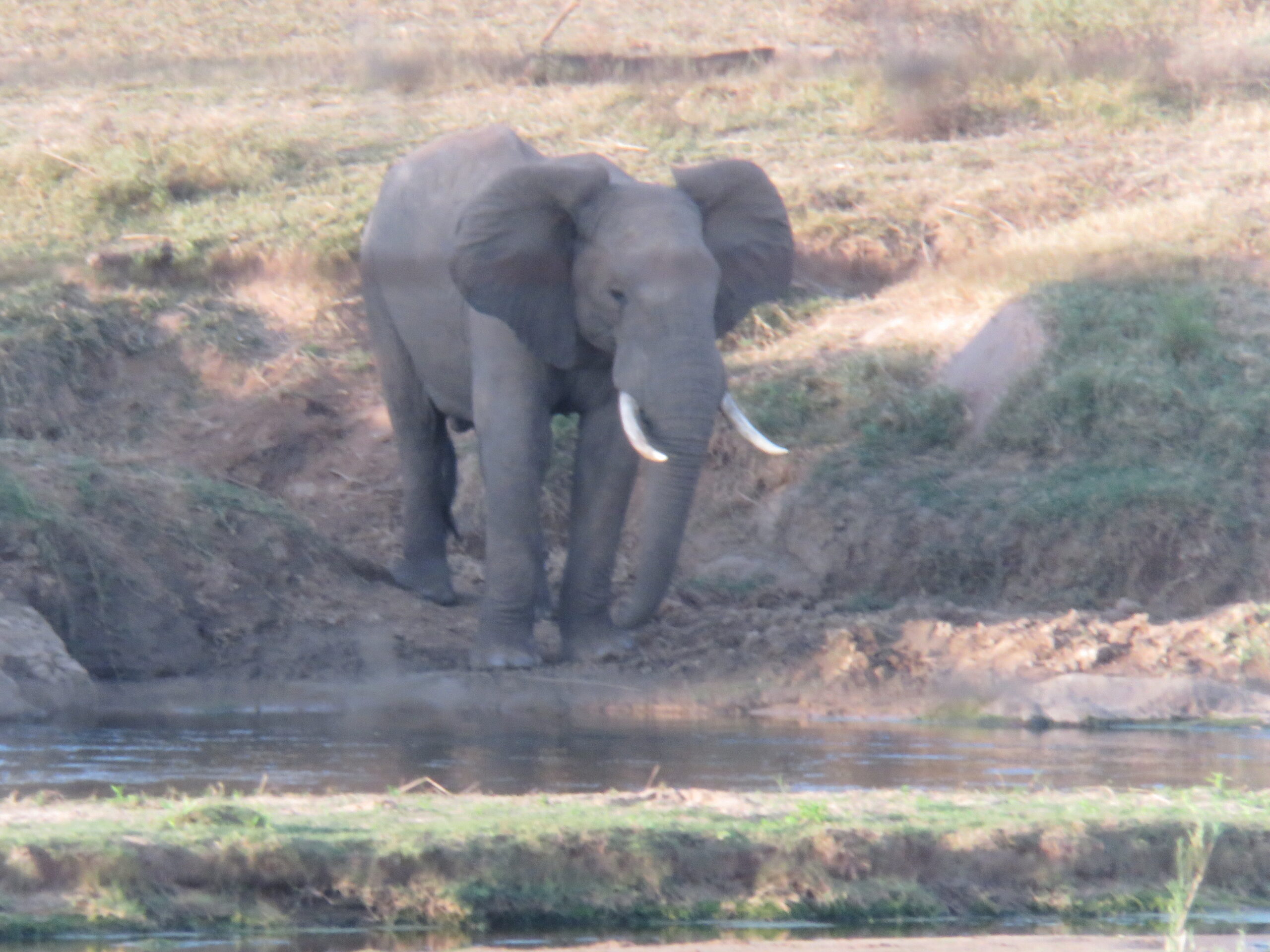
As you peruse today’s photos, it’s easy to determine which of our photos were taken across the river and which were taken nearby on our side of the river. Not only did we see numerous elephants, but we also saw several other species, which we’ll share over the next few days.

We were so busy checking out the wildlife that by the time darkness fell, we’d hardly had any time to chat. Tonight is Friday, and the four of us are heading to Jabula for dinner for our usual Friday night reservation. Gosh, it’s fun to have a more active social life and continue to enjoy some quiet evenings at our bush house.

Yesterday, in Lebombo, we shopped at the market where many locals shop and prices are ultra-low on produce. We purchased two enormous heads of cabbage, two bags of red apples, and a giant bag of carrots. As the bush becomes less abundant for the wildlife, supplementing their diets with fresh fruit and veg is a nice treat.
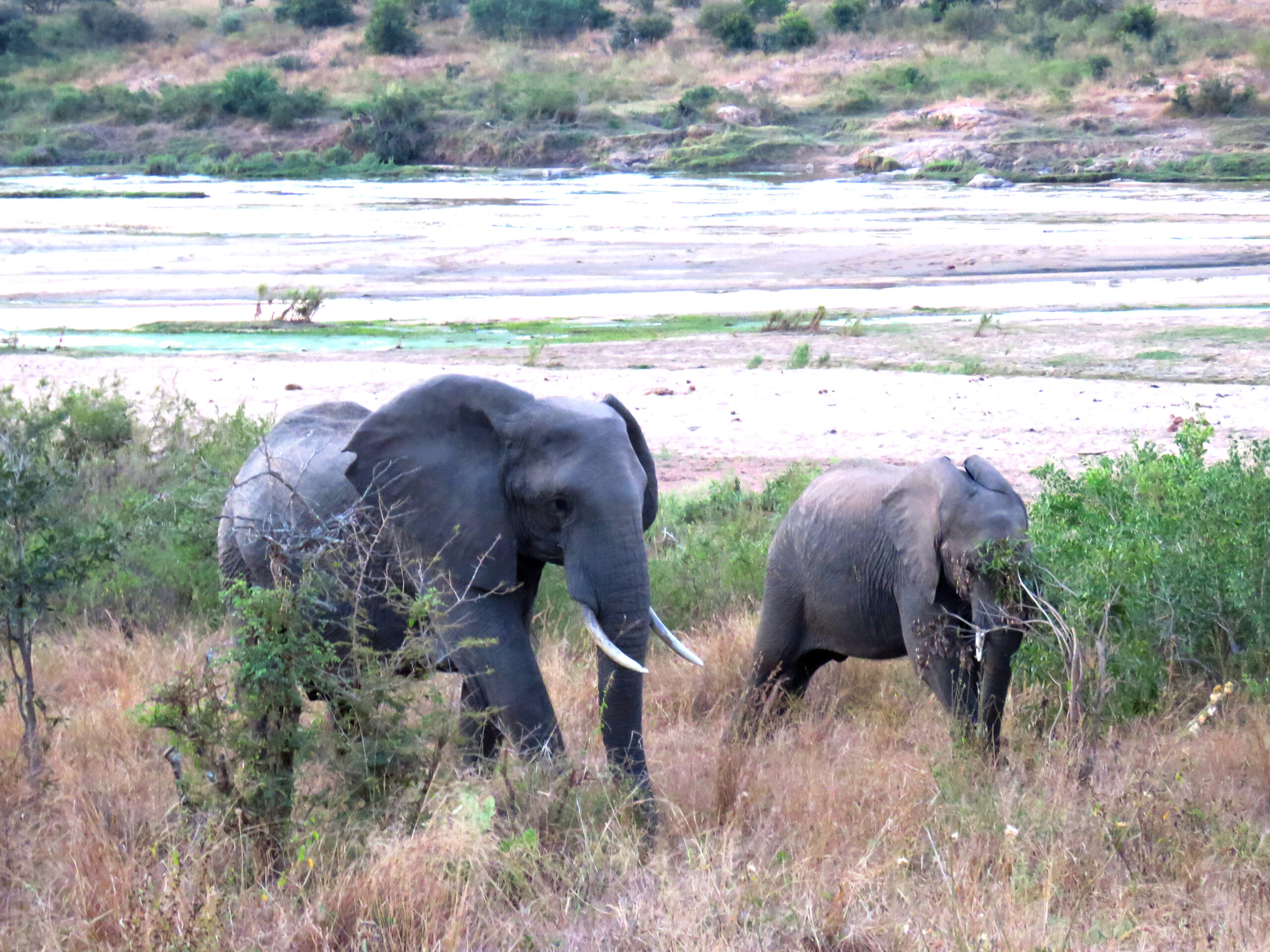
Ms. Bossy, our most frequent kudu visitor, was over the moon for all the fresh produce, so much so that she walked right up to me on the veranda while I was seated at the table and stared into my eyes pleading for more. She’s hard for me to resist as she repeatedly licked her lips.

Then, Little showed up, anticipating pellets and looking pleasantly surprised to see the apples and carrots I tossed his way before ever throwing him a single pellet. Warthogs don’t eat cabbage, regardless of how hungry they may be. But, they love carrots and apples, which I cut up into bite-sized pieces.
After feeding the bigger game, including more kudus and wildebeest, I cut up a particular batch of even smaller bits for the bushbucks, who, with their little mouths, can’t handle more significant pieces. Once the pigs leave, hopefully soon, we’ll be able to feed the bushbucks, which the pigs always chase away.

The hard part is that there is seldom a time there aren’t pigs in the garden, often napping, with one ear tuned to the sound of food hitting the ground. They’ll be on their feet in a matter of seconds when the possibility of food is presented. Tom always says, “That’s why they are called pigs.” I suppose he is right.
Once we returned home last night, we quickly prepared an easy dinner of cheese omelets and bacon when anything else we had on hand would have taken too long to prepare. Since we have no interest in food during sundowners, although we provide snacks for visiting guests, we were starved when we returned.
Later, we watched a few episodes of the Australian series Janet King and finally dozed off to sleep.
It was a good day and an enjoyable evening.
Be well.
Photo from one year ago today, May 21, 2020:
 |
| We love the reflection of clouds in the water as we drive through the countryside in any country. For more photos, please click here. |




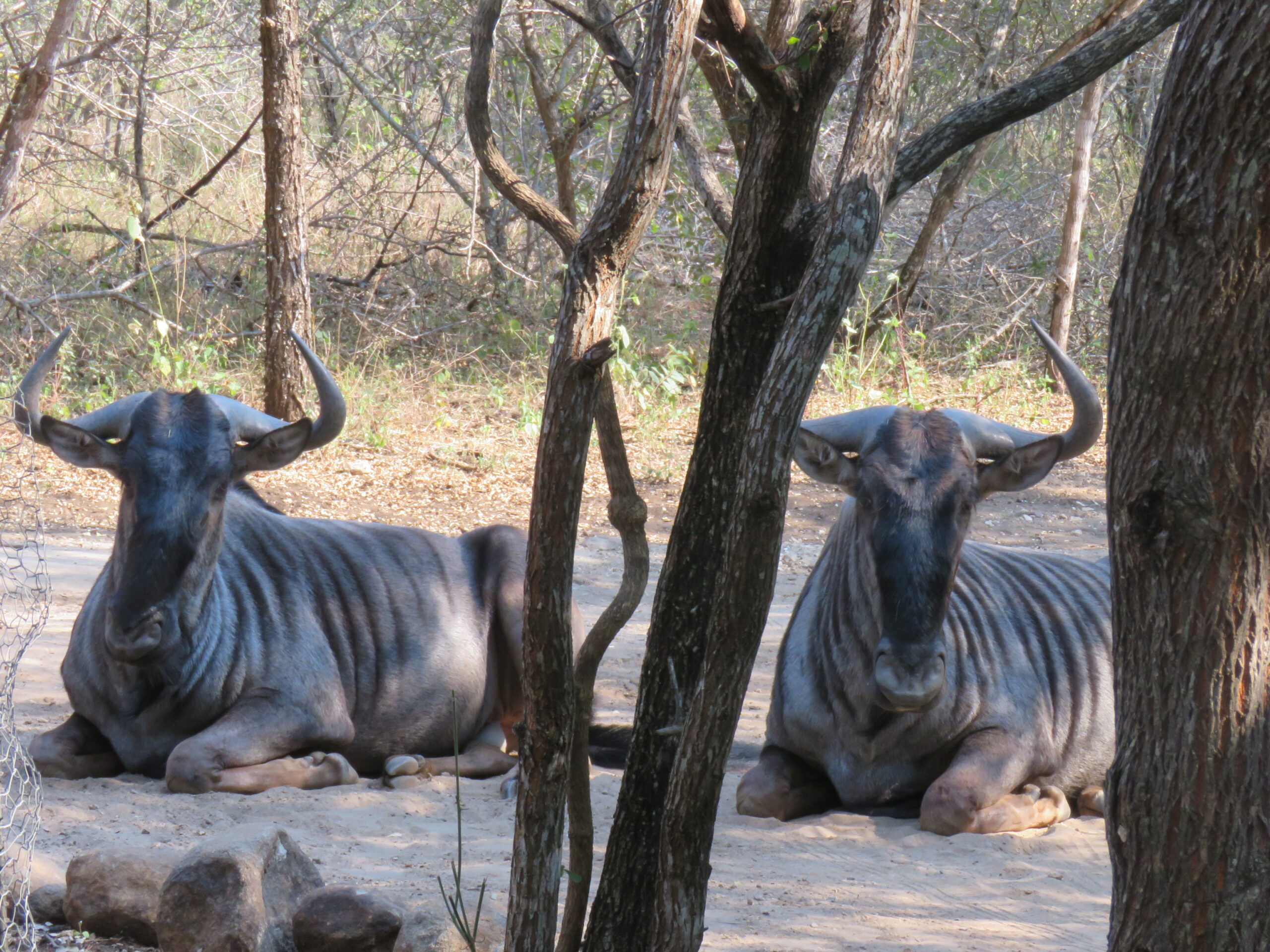














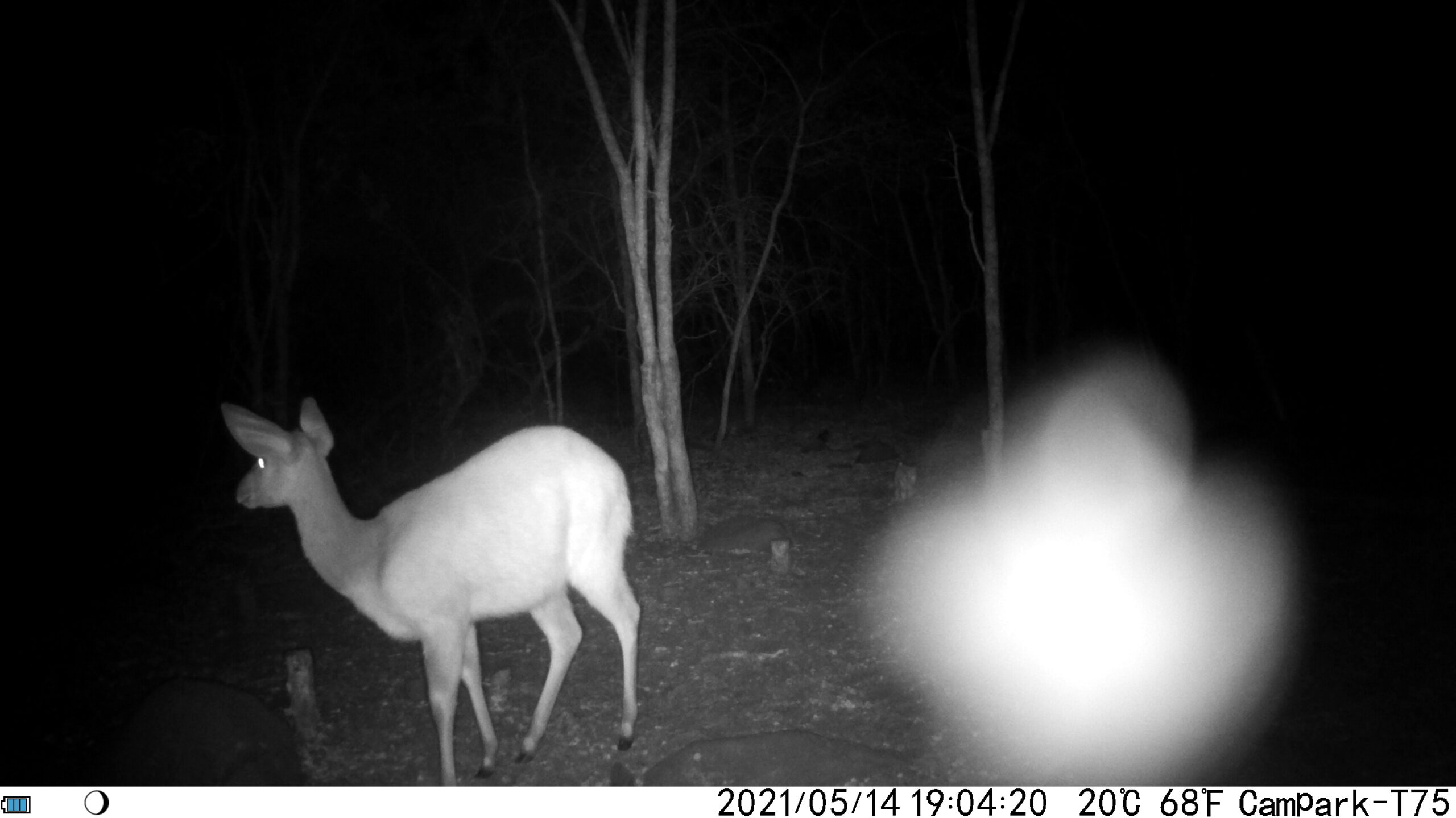











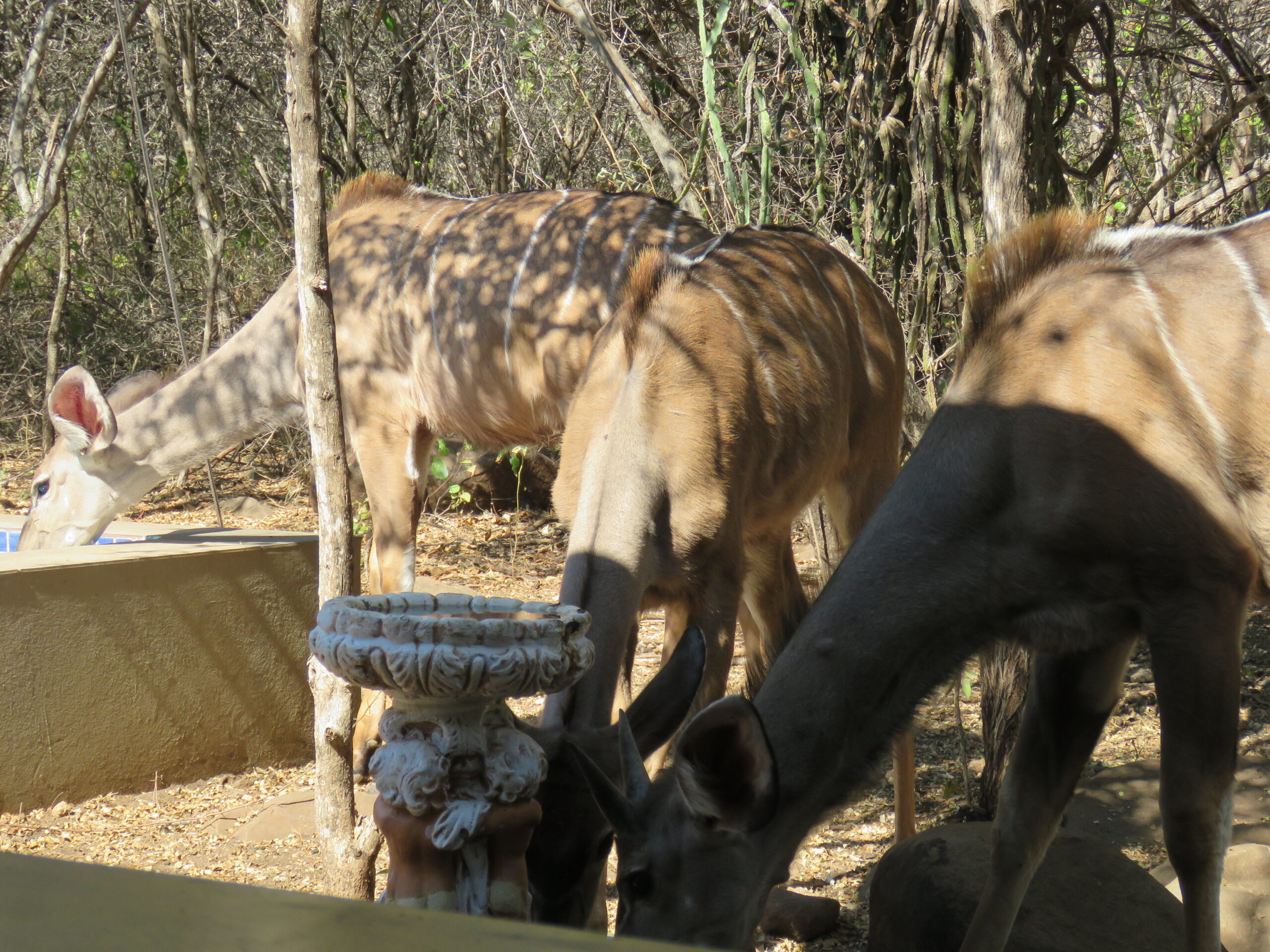







 A hornbill was pecking at the seed container while on the veranda side railing.
A hornbill was pecking at the seed container while on the veranda side railing.




 Our photo of the black sparrowhawk when it took a break from devouring its kill.
Our photo of the black sparrowhawk when it took a break from devouring its kill.